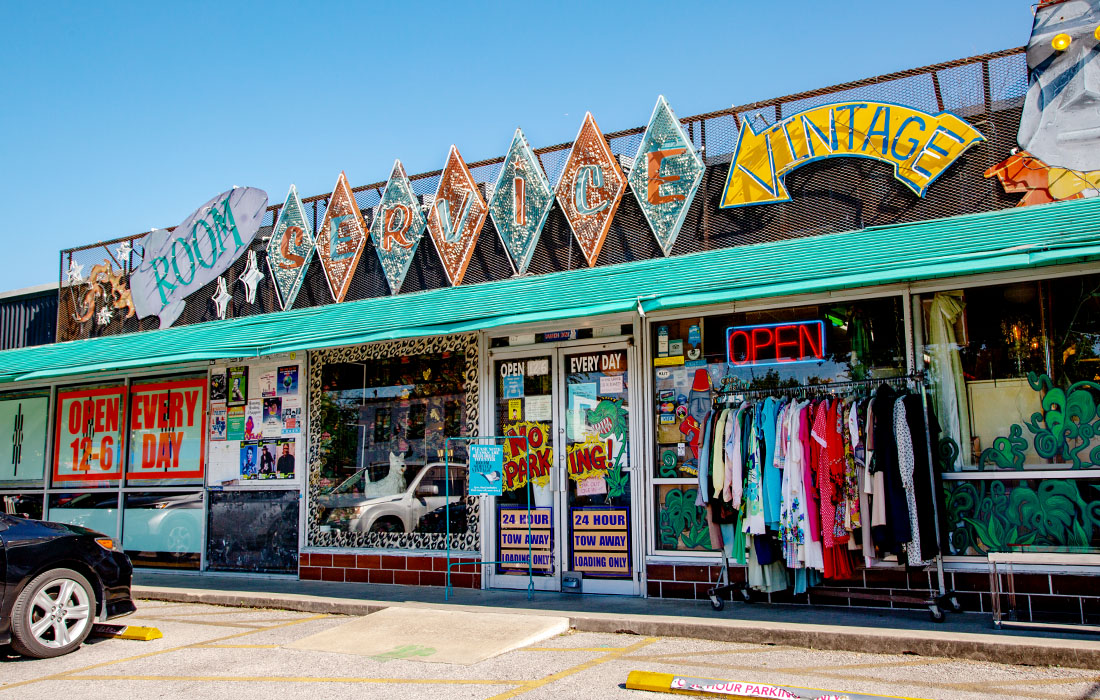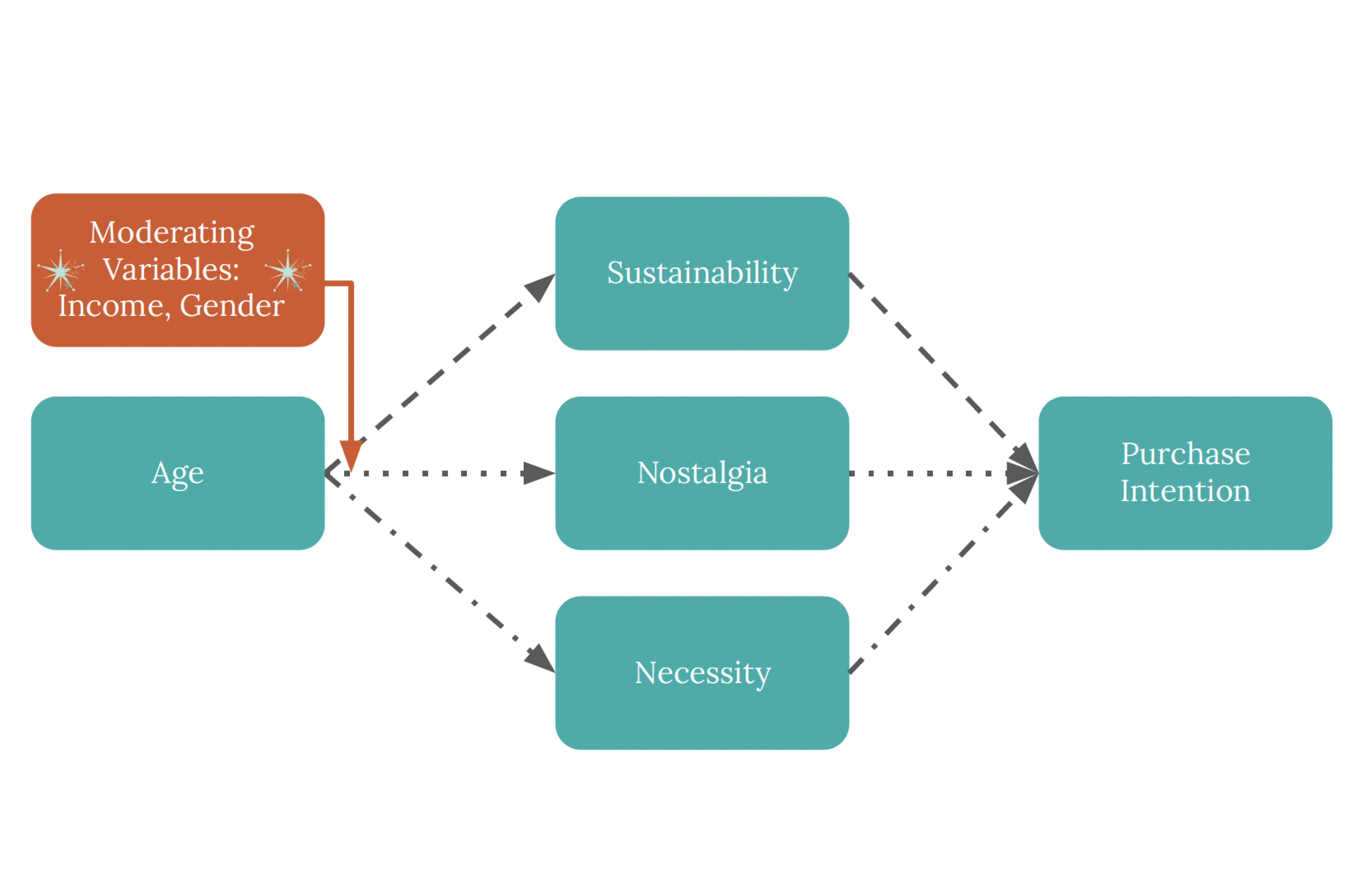The Effect of Age on The Motivation to Purchase Vintage Items
The Effect of Age on The Motivation to Purchase Vintage Items

What?
Conducted a research study to explore how generational characteristics affect the motivation to purchase vintage items, with a focus on social media influence, nostalgia, and sustainability.
Where?
Austin, TX
Who?
Andrew Griffiths (Co-author, Me)
Madison Phelan (Co-author)
Jana Landers (Co-author)
Yifan Feng (Co-author)
Why?
To understand the relationship between different generations’ purchase intentions and their motivations, such as nostalgia, necessity, or sustainability, to inform future marketing strategies.
*Accepted for presentation at the NCA 108th Annual Convention, November 17-20, 2022 in New Orleans, LA.
Overview
This research project explores how different generations are motivated to purchase vintage items, focusing on nostalgia, necessity, and sustainability. The study used Room Service Vintage in Austin, Texas, as a case study, gathering data through surveys and experiments to understand consumer behaviors. Findings revealed significant differences in purchasing motivations across age groups, providing insights for targeted marketing strategies in the vintage retail market. The study also examined the role of social media in influencing purchase intentions.
The Challenge
The study needed to investigate how different motivations (such as nostalgia, necessity, or sustainability) impact the purchasing of vintage items across various generations. The challenge was to design a research approach that could accurately capture these motivations, particularly when dealing with varying social media influences and personal factors like income and age.
The Outcome
The study found significant differences in motivation based on generational characteristics, such as older generations purchasing items based on nostalgia and younger generations focusing on necessity. The findings suggested marketing strategies tailored to specific age groups could enhance purchase intention.

What?
Conducted a research study to explore how generational characteristics affect the motivation to purchase vintage items, with a focus on social media influence, nostalgia, and sustainability.
Where?
Austin, TX
Who?
Andrew Griffiths (Co-author, Me)
Madison Phelan (Co-author)
Jana Landers (Co-author)
Yifan Feng (Co-author)
Why?
To understand the relationship between different generations’ purchase intentions and their motivations, such as nostalgia, necessity, or sustainability, to inform future marketing strategies.
Overview
This research project explores how different generations are motivated to purchase vintage items, focusing on nostalgia, necessity, and sustainability. The study used Room Service Vintage in Austin, Texas, as a case study, gathering data through surveys and experiments to understand consumer behaviors. Findings revealed significant differences in purchasing motivations across age groups, providing insights for targeted marketing strategies in the vintage retail market. The study also examined the role of social media in influencing purchase intentions.
The Challenge
The study needed to investigate how different motivations (such as nostalgia, necessity, or sustainability) impact the purchasing of vintage items across various generations. The challenge was to design a research approach that could accurately capture these motivations, particularly when dealing with varying social media influences and personal factors like income and age.
The Outcome
The study found significant differences in motivation based on generational characteristics, such as older generations purchasing items based on nostalgia and younger generations focusing on necessity. The findings suggested marketing strategies tailored to specific age groups could enhance purchase intention.

The Solution
Developed a comprehensive research methodology involving surveys and experiments, segmenting respondents into groups (Control, Nostalgia, Necessity, and Sustainability). The study also used diverse media, such as vintage clothing and furniture, to gauge responses. Statistical analysis was employed to explore correlations between age, income, and purchase intentions.
Results: Correlations






Results: Regressions




Limiting Factors
Measurement Validity
• 29.06% of respondents choose “other” when we ask “what is your biggest motivation for purchasing vintage items?”
– Text answers including “uniqueness, design, good material/quality, affordable, mix of sustainability/nostalgia/necessity” could fit in “nostalgia”, “necessity”, or “sustainability” if these three terms are well-explained.
• The experiment question for sustainability is vague
• Variation in measuring “connectivity” for nostalgic feelings
Externality Validity
• Majority of respondents were women, but reflective of Room Service’s analytics
Internality Validity
• Online survey allows room for error
– Could not control for exposure prior to survey, the environment or time of day when survey was taken
